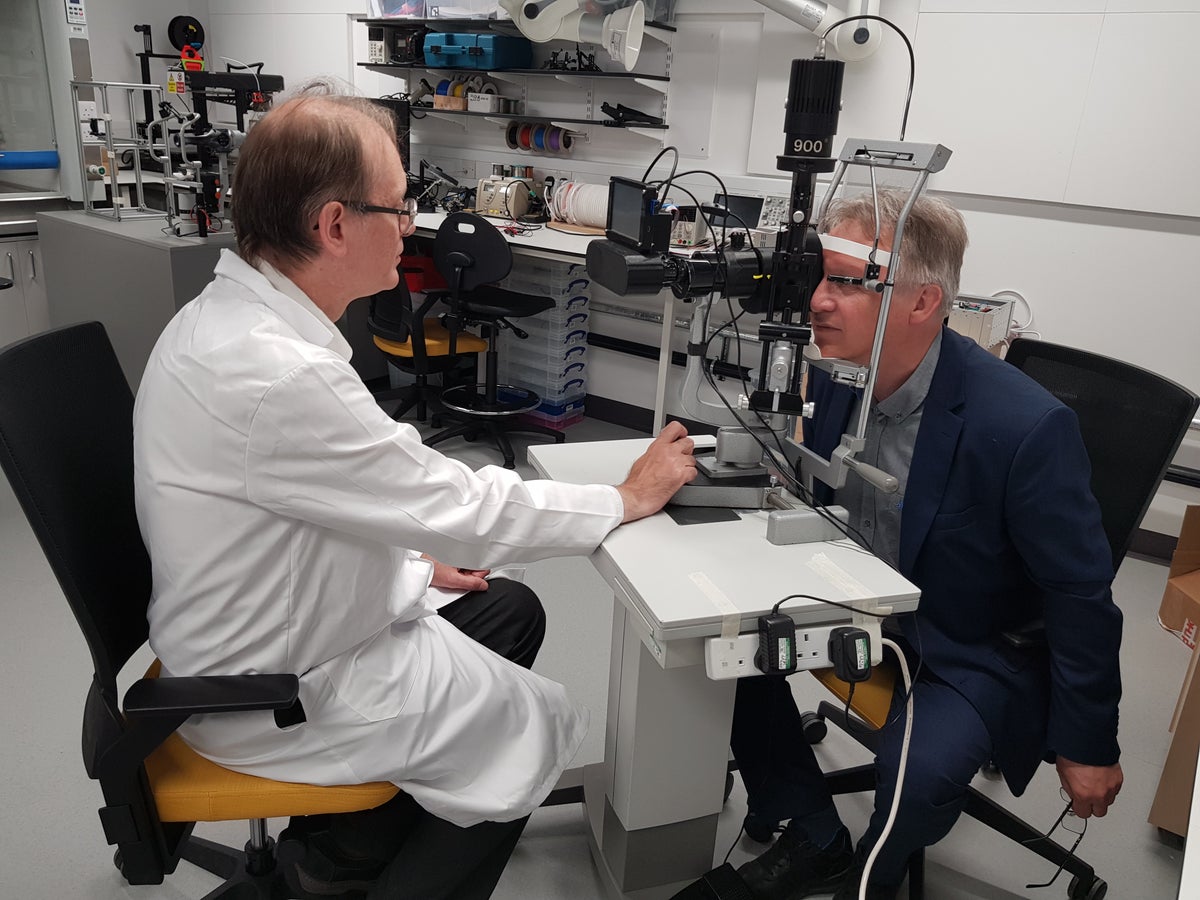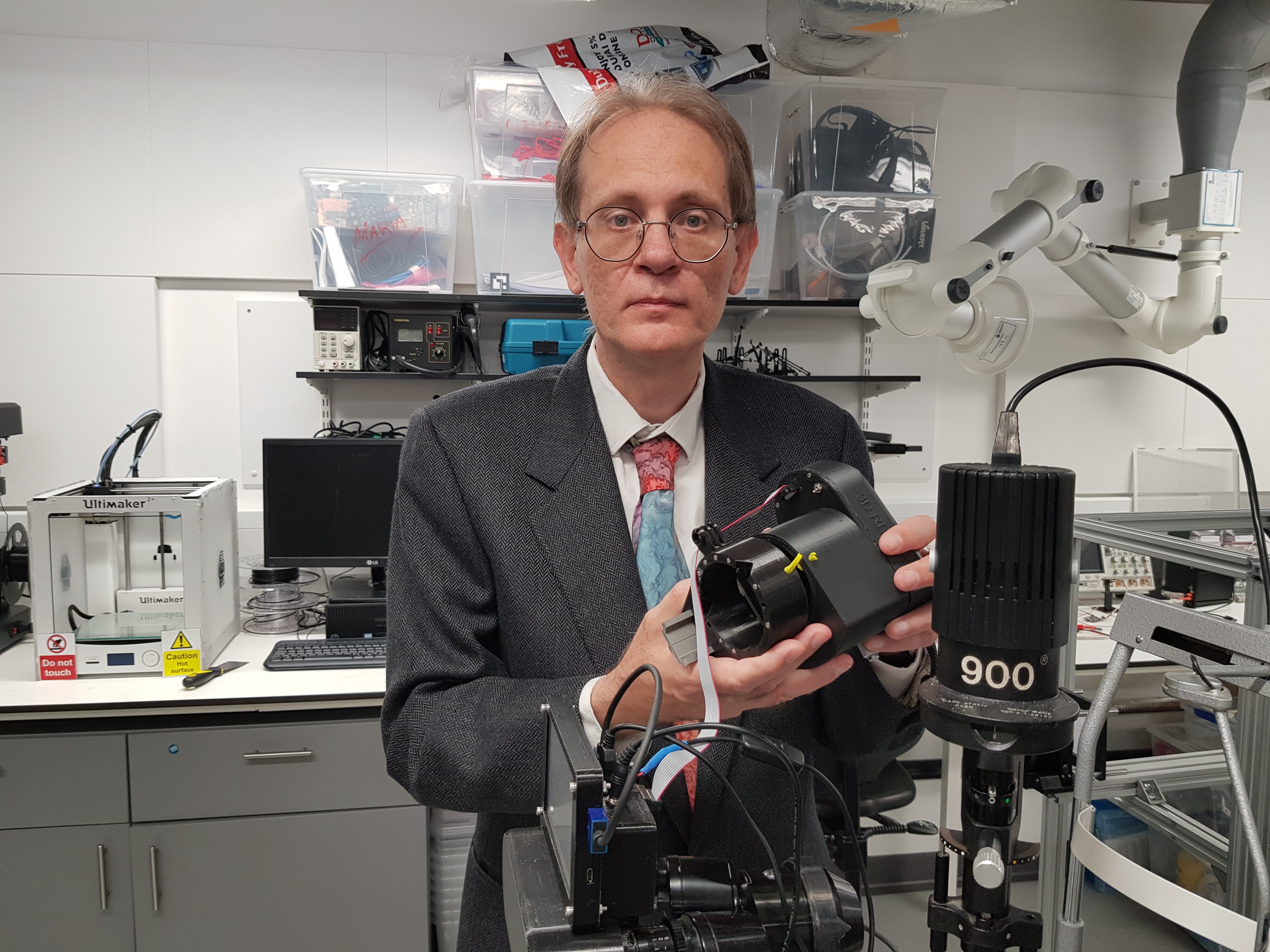
Eye tests could soon be transformed after researchers developed a “pioneering” low-cost device which can capture 3D images of the eye.
The device can capture images of the retina, the back of the eye and the cornea and can be added to a slit lamp which is commonly used by optometrists to check the health of the eye.
It is hoped the new development will be able to identify conditions such as glaucoma and eye cancer.
Existing machines for 3D imaging can cost up to £100,000 which often makes them too expensive for large-scale population use.

A modified version of the technology could make it possible for people to take “selfies” of their retinas, meaning that the machine could be used in non-supervised settings such as pharmacies.
The device has been developed by Dr Mario Giardini, Dr Ian Coghill, and Kirsty Jordan, at the Department of Biomedical Engineering of the University of Strathclyde.
Dr Giardini said: “Patients can be imaged easily and inexpensively, without the need for a specialist to be present. Our device reliably takes 3D images, and it is comfortable and fast, at less than a second.
“The technology has the potential to revolutionise the screening and follow-up within the community of conditions such as glaucoma, as any optometrist, anywhere in the world, could afford it. This work makes eye diagnostics more accessible, reducing inequalities.”

Dr Iain Livingstone, Consultant Ophthalmologist at NHS Forth Valley, who has collaborated with Dr Giardini on previous ophthalmology projects, said: “So much of what we do as eye doctors depends on seeing things in 3D.
“It’s a crucial addition to the way we interpret information, harnessing digital to glean so much more from a slit lamp exam, with potential reach far beyond the hospital toward community optometry, bringing nuanced measuring tools closer to home for patients.”
Working with IDCP Scotland, who manufacture digital technology, the device will now be put into production with a grant from Scottish Enterprise.
Jamie Thomson, managing director of IDCP Scotland, said: “As a University of Strathclyde alumnus, it gives me great pride to be working closely with the team helping to develop this technology, which has the potential to improve the quality of patient care and fits within IDCP Scotland’s key objective to revolutionise patient care within ophthalmology.”







